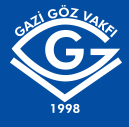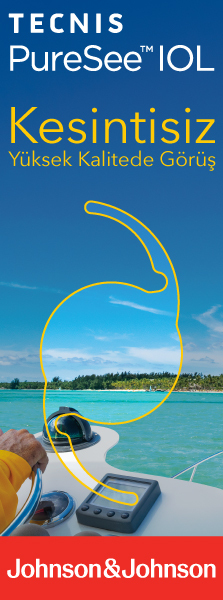2Prof. MD, Retina, Beyoglu Training and Research Hospital, Beyoglu, Turkey DOI : 10.37845/ret.vit.2021.30.8 Purpose: To compare visual and anatomical results of anti- vascular endothelial growth factor (VEGF) combined with photodynamic therapy (PDT) versus only performing anti- VEGF therapy in eyes with polypoidal choroidal vasculopathy (PCV).
Materials and Methods: Retrospective review of 60 PCV patients who underwent anti- VEGF combined with PDT (Group 1) or solely performing anti- VEGF therapy (Group 2) were enrolled. The best corrected visual acuity (BCVA), central macular thickness (CMT), presence of subretinal fluid (SF) were compared among the groups during the follow-up periods at baseline, 1st month, 3rd month, 6th month, 9th month, 12th month,18th month, 24th month and final visit, respectively.
Results: The mean age of the patients was 71.96 ± 8.50 years (range, 52-88 years), and the mean follow-up period was 53.83 ± 14.86 (range, 20-85 months). The mean number of injections was observed as 10.56 ± 1.88 (range, 7 -15) in the first group and 11.83 ± 2.61 (range, 7 - 17) in the second group, respectively (p = 0.039). In group 1, BCVA decreased from the logarithm of the minimum angle resolution (log MAR) of 0.59 ± 0.39 to 0.70 ± 0.41 log MAR in the final examination (p = 0.016), CMT initial 355.562 ± 95.54 ?m decreased from to 296,76 ± 105,03 ?m at the last examination (p <0.001), the presence of SRF showed a statistically signifi cant decrease in follow-up periods compared to the initial period (p <0.001). In group 2, BCVA decreased from initial 0.65 ± 0.61 log MAR to 0.82 ± 0.56 log MAR in the final examination (p <0.001), CMT decreased from baseline 372.60 ± 114.21 ?m to 287.06 ± 64.32 ?m at the last examination (p = 0.001), the presence of SF showed a statistically signifi cant decrease in follow-up periods compared to the initial period (p <0.001). In the last examination, there was no statistically signifi cant difference between the groups in terms of presence of SF (p = 0.305).
Conclusion: Both full-dose PDT combined with anti-VEGF and only anti-VEGF applications are effective in the treatment of PCV. There was no signifi cant difference in visual or anatomical results among the two groups. However, we observed that full dose PDT administration combined with anti-VEGF reduces the need for anti-VEGF usage.
Keywords : Polypoidal choroidal vasculopathy, photodynamic therapy, ranibizumab, afl ibercept




